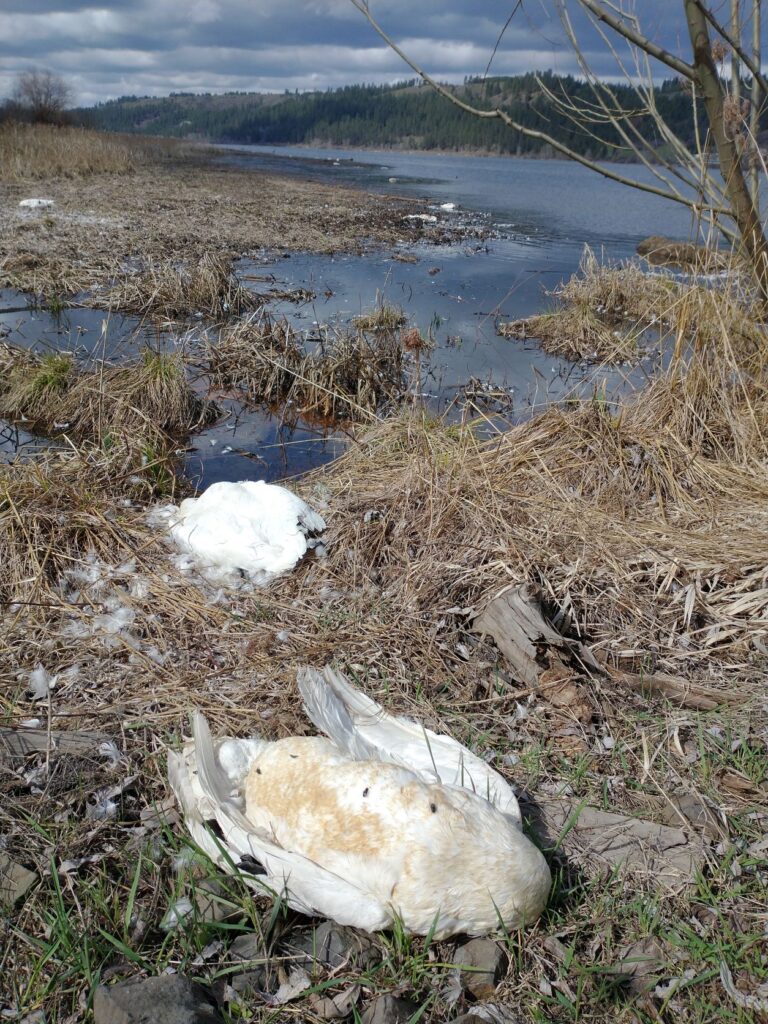Harrison, Idaho
This spring has seen higher than usual deaths of tundra swans in North Idaho. Under the bucolic waterway of the Chain Lakes of the Coeur D’Alene River lies the toxic legacy of the Silver Valley’s productive mining history.
According to the Basin Environmental Improvement Project Commission, the Coeur d’Alene River delivers 200 tons of lead to Lake Coeur D’Alene each year. Along with signs along the basin stating not to disturb the sediments, the most visually striking evidence of this ongoing heavy metal pollution is the death of migrating tundra swans.
In early April 2022, the lakes near Harrison, Idaho, were dotted with numerous white piles of feathers in the cattails and along the shoreline. These swans in particular accumulate lead while they feed and digest sediments in flooded fields and along the shore. Counts of dead birds for this season are still preliminary, and there can be a number of factors on why this spring has seen higher mortality.
The remediation of toxic sediments in the CDA basin is one of the largest brown field projects in the country and involves the EPA, local counties, the Coeur d’Alene Tribe, and both Idaho and Washington states. Most of the work so far has focused on areas around Kellogg, but this year work to dredge contaminated sediment from the river will move downstream near the Old Mission State Park.
Additionally, there is the task of restoring the wetlands. In 2007, the U.S. Fish and Wildlife Service worked with a local landowner to create an easement on farmland that contains uncontaminated wetlands. One thought is to try to haze swans away from the contaminated wetlands to those that get water from uncontaminated streams. There is plenty of restoration work still needed along the river to safeguard the health of wildlife and water quality.
Learn more about Idaho’s wetland habitat.

Find more wildlife stories in the Nature column archives.












